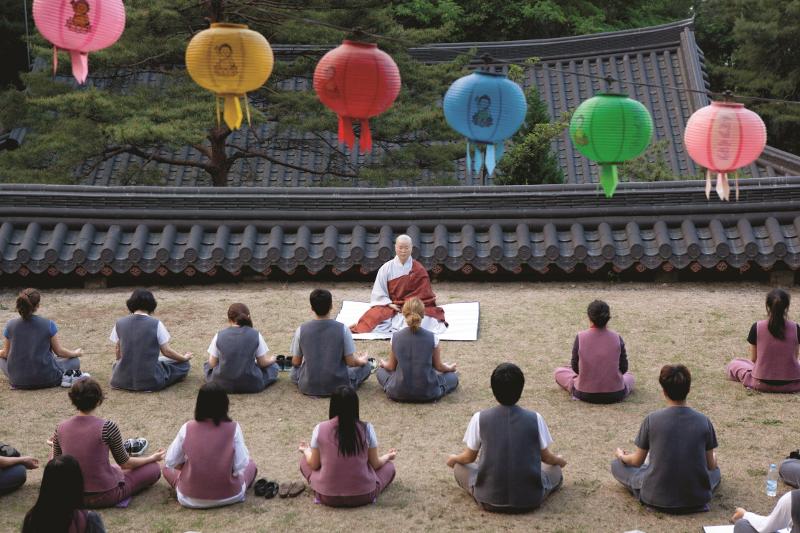
Launched in 2002, the Buddhist templestay project attracted more than six million people over the last two decades, with 11% of those attending coming from overseas. Shown are participants practicing meditation with a monk. (Cultural Corps of Korean Buddhism)
By Yoon Sojung
Over six million people including 11% from abroad have participated in the templestay program of Korean Buddhism since 2002, when the program was launched to mark the Korea’s joint hosting of the World Cup of soccer with Japan.
Chun Byung-Gil, associate professor at the Department of Hotel Tourism and Food Service Management of Dongguk University, said this in a Oct. 24 presentation at a seminar on the program’s outcomes and direction in its first 20 years at Members’ Office Building of the National Assembly in Seoul’s Yeongdeungpo-gu District.
Chun said the government in 2002 launched support for the program ahead of the World Cup in the same year to meet accommodation demand for international visitors and expand opportunities for them to experience traditional Korean culture. The number of participating temples jumped from 33 in the beginning to 142 this year for annual average growth of 13.2%.
The cumulative number of participants over the 20-year period was an estimated 6,014,737 as of late last year, with foreign participants accounting for 11% (656,908).
By nationality, the U.S. had the most participants (27,646) followed by France (11,464), China (9,985), Germany (7,029), Vietnam (7,275), the U.K. (4,768) and Japan (4,015).
The professor said no one country or ethnicity dominated templestay demand from overseas and that people from both East and West took part.
A Gallup poll also found that the average general satisfaction score of foreign participants in the program from 2017-21 was 6.33 out of seven.
Templestay was selected in 2009 as one of the world’s five successful tourism products by the Organisation for Economic Co-operation and Development and named a leading example of religious tourism at the 2014 International Congress on Religious Tourism and Pilgrimage of the United Nations World Tourism Organization.
Chun said, “Templestay has established itself as Korea’s leading tourism content for cultural experience, contributing to promotion of the national brand and executing the globalization of Korean culture.”
arete@korea.kr























